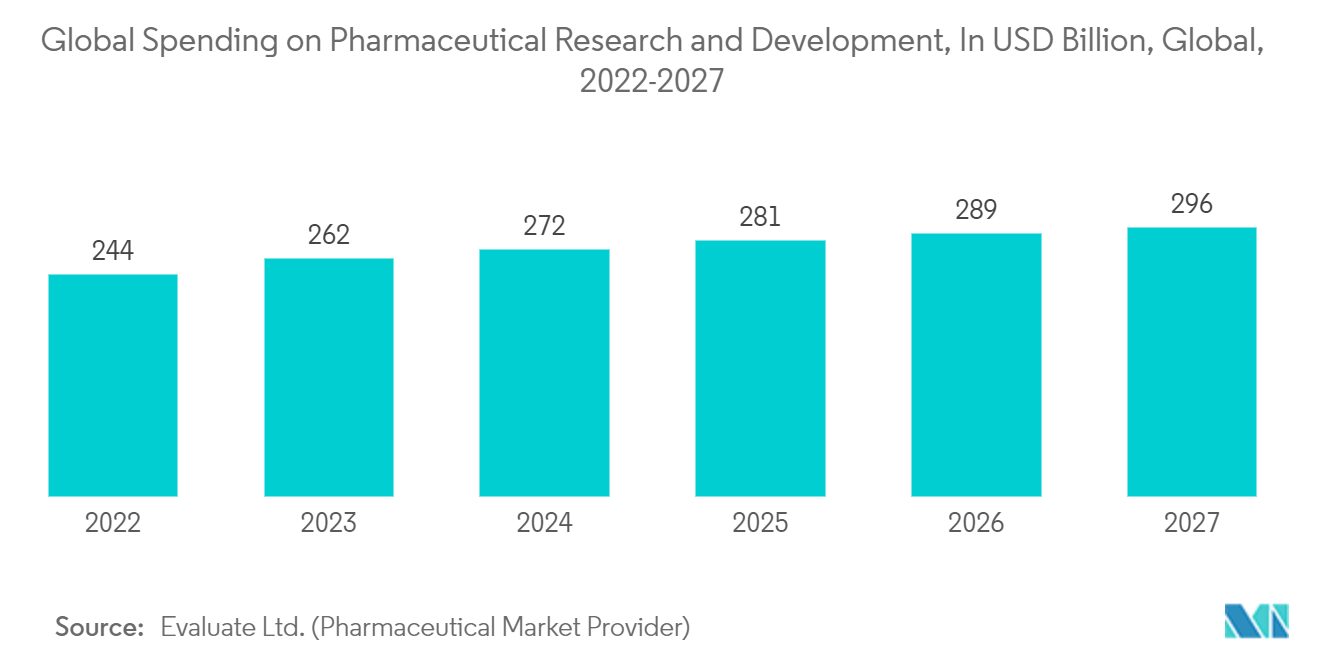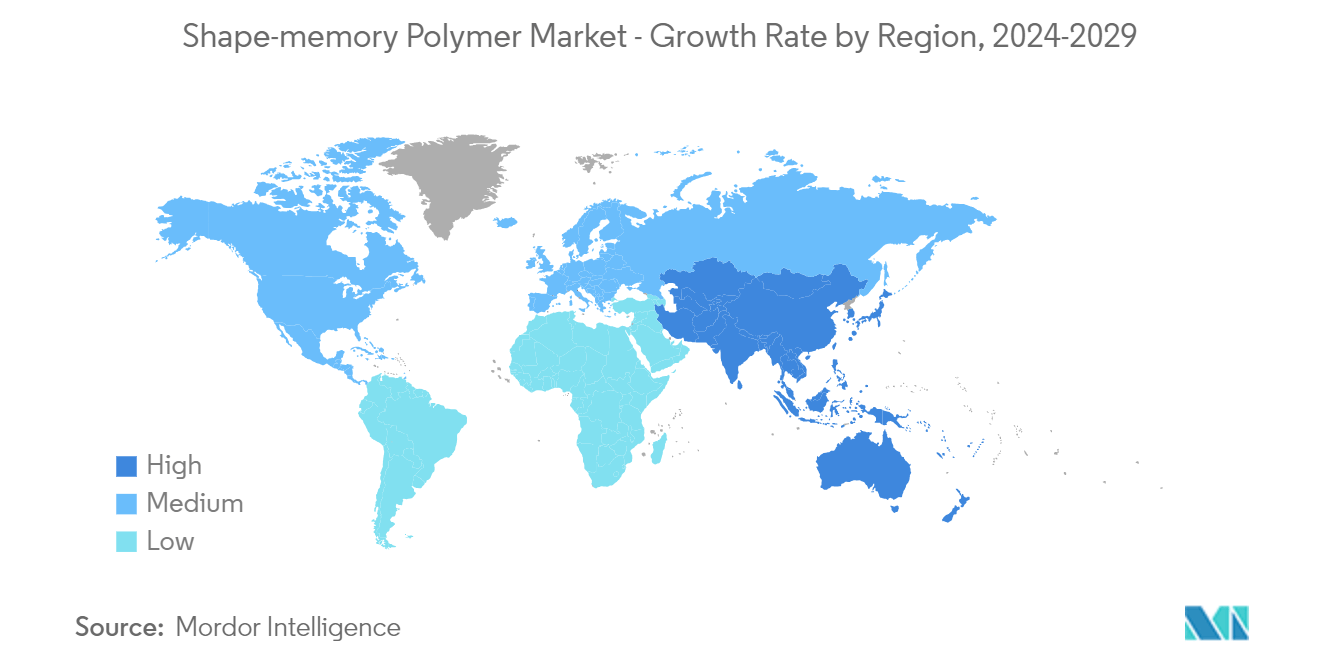Market Trends of Shape-memory Polymer Industry
The Temperature-induced Segment is Expected to Dominate the Market
- Thermally-induced or temperature-induced types of shape-memory polymers (SMPs) are the most studied type of SMPs that can be activated by direct thermal application. When the temperature applied is higher than the polymer transition temperature, a transitory shape can be programmed to an SMP.
- The thermally-induced SMP mechanism is based on two thermal transitions: melting temperature and glass transition temperature.
- The most common melting temperature-based SMPs are polyolefins, polyethers, and polyesters, which show a low melting temperature soft phase and a crystalline hard phase that remains unchanged at high temperatures.
- SMPs whose glass transition temperature is above 25 °C are referred to as glass transition temperature-based materials, and they show a slow shape recovery compared to melting temperature-based SMPs. However, slow shape recovery is a significant property for biomedical applications because it is preferred not only for clinical purposes such as orthodontic applications but also for avoiding insertion-induced tissue damage.
- According to the article titled Shape Memory Polymeric Materials for Biomedical Applications, SMPs for biomedical applications have wide applicability in the fields of general medicine, drug delivery, regenerative medicine, dentistry, neuromedicine, cancer therapy, orthopedics, and corrosion protection. Therefore, the growth in the field of biomedical will benefit the temperature-induced type of SMPs in the future.
- According to Evaluate Ltd, the gross spending on pharmaceutical research and development worldwide will reach USD 302 billion by 2028, making a 24% growth in value over USD 244 billion in 2022.
- By the end of 2024, the worldwide revenue of the medical technology industry will likely be around USD 682 billion, according to Mediobanca. The continuous growth in the medical technology industry will also boost the demand for temperature-induced SMPs.
- Temperature-induced SMPs are also widely used in the aerospace industry because of their advantages, such as their light weight, large recoverable deformation capability, and biocompatibility. The use of SMPs in the aerospace industry leads to improved fuel efficiency, reduced emissions, and enhanced performance.
- In June 2023, Boeing forecasted that the demand for new commercial jets by 2042 will likely reach 42,600, valued at USD 8 trillion. Additionally, about half of those deliveries will replace older jets with more fuel-efficient models for reducing emissions. This is expected to boost the demand for temperature-induced SMPs during the forecast period.
- Hence, owing to the above-mentioned factors, temperature-induced SMPs are likely to account for the major market share while maintaining their market dominance during the forecast period.

Asia-Pacific is Expected to Witness the Highest Growth Rate
- Asia-Pacific is expected to witness major growth in the demand for shape-memory polymers (SMPs) owing to the increasing demand from countries like China, India, and Japan.
- The region has countries with substantially large automotive, construction, healthcare, textile, and other industries. For instance, China is the world’s largest construction, automotive, and textile market.
- Moreover, according to the International Organization of Motor Vehicle Manufacturers (OICA), in 2022, China, Japan, India, and South Korea were among the top 5 countries in terms of the production volume of passenger cars and commercial vehicles. For instance, China manufactured over 30 million units of passenger cars and commercial vehicles in 2023.
- As the global demand for owning a personal four-wheeler vehicle is increasing and the trend of switching over to battery powered electric cars is expanding, the production of new cars will increase year-on-year. According to the Society of Automotive Engineering of China, car sales in 2030 are expected to reach 38 million, of which the sales of EVs are estimated to amount to 15 million, or 40%. Such factors will increase the demand for SMPs, leading to rapid growth in the Asia-Pacific.
- Also, SMPs are widely being adopted in the construction industry. With the construction industries of China and India expected to witness rapid growth in the coming years, a significant contribution to the market growth in the region is expected to be made. According to Oxford Economics, China, the United States, and India will account for 51% of global construction work done by 2037, valued at USD 13.9 trillion.
- Hence, owing to the reasons mentioned above, Asia-Pacific is likely to witness the highest growth during the forecast period.


